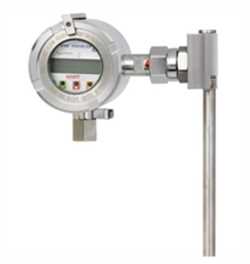
Product Name: KSR Kuebler BLM Magnetostrictive Level Transmitter
Brand: KSR Kuebler
Product Code: BLM
Tags: KSR Kuebler
KSR Magnetostrictive Level
BLM Magnetostrictive Level
BLM Level Transmitter
KSR BLM Level Transmitter
KSR Kuebler Magnetostrictive Transmitter
Kuebler BLM Magnetostrictive Level
BLM Transmitter
KSR Kuebler Level Transmitter
KSR Kuebler BLM
Kuebler BLM Magnetostrictive Level
KSR Kuebler BLM Magnetostrictive Transmitter
KSR Magnetostrictive Transmitter
KSR BLM Magnetostrictive Level Transmitter
Kuebler Magnetostrictive Transmitter
KSR BLM Magnetostrictive Transmitter
Kuebler Magnetostrictive
Kuebler BLM Magnetostrictive Level Transmitter
BLM Magnetostrictive Transmitter
Magnetostrictive
Magnetostrictive Level Transmitter
Are you interested in the product KSR Kuebler BLM Magnetostrictive Level Transmitter from manufacturer KSR Kuebler with code BLM? Contact us now and get offer. Imtek Engineering, the fastest and most reliable industrial equipment supplier in the world, will offer you the best offer!
Get Offer With E-Mail: info@im-tek.com
Get a offer for KSR Kuebler BLM Magnetostrictive Level Transmitter from our live support team now!
Applications Sensor for continuous level measurement of liquids in bypass level indicators Chemical and petrochemical industries, offshore Shipbuilding, machine building Power generating equipment, power plants Pharmaceutical, food, water treatment, environmental engineering industries Special features Continuous level measurement on the outside of the bypass 2-wire technology 4 ... 20 mA Measured value output via digital interface and a selectable measured value as analogue signal Case from stainless steel (display from glass) Magnetostrictive level measuring instrument with high resolution Description Level sensors with a magnetostrictive, high-resolution measuring principle are used for continuous level measurement of liquids and are based on determining the position of a magnetic float following the magnetostrictive measuring principle. The sensors are mounted on the outside of a bypass level indicator. The measuring process is triggered by a current impulse. This current produces a circular magnetic field along a wire made of magnetostrictive material, which is held under tension inside the sensor tube. At the point being measured (liquid level) there is a cylindrical float with permanent magnets acting as a position transducer, whose field lines run at right angles to the impulse magnetic field. This magnetic field of the float tensions the wire. The superposition of these two magnetic fields triggers a mechanical wave in the wire. This is converted into an electrical signal at the end of the wire in the sensor housing by a piezoceramic pick-up. The measured propagation delay enables the origination point of the mechanical torsional wave, and thus the float position, to be determined with high accuracy.